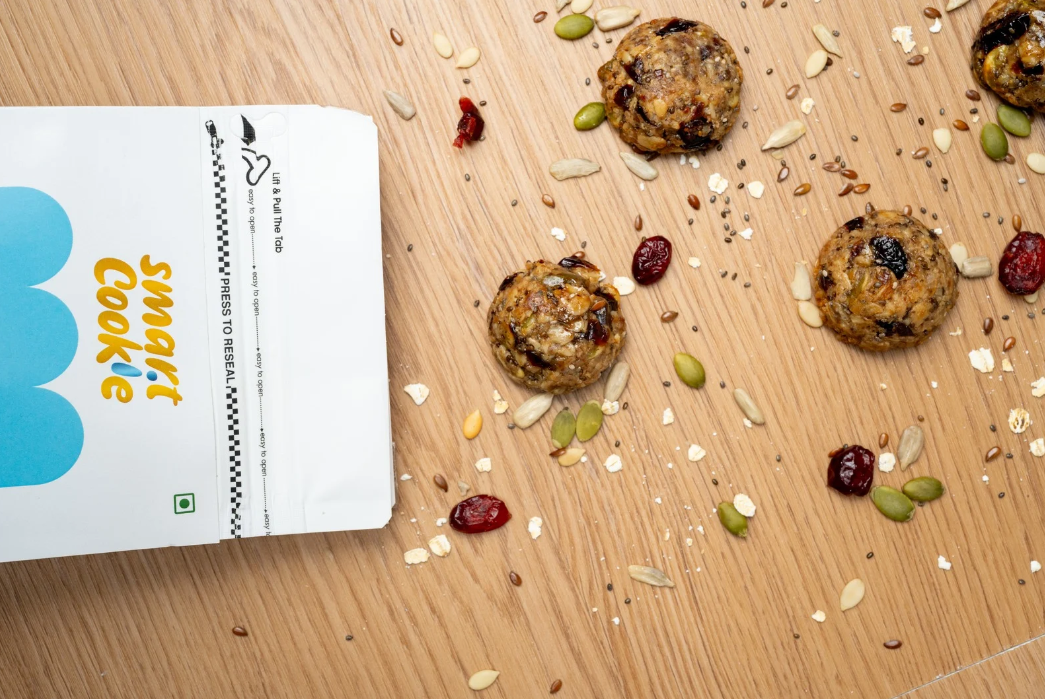
Healthy Baking Tips & Tricks: Elevate Your Treats with Smarter Choices
Share
At Smart Cookie Foods, we believe that delicious treats don’t have to come at the cost of your health. With the right ingredients and a few expert tips, you can enjoy the best of both worlds—flavorful, satisfying baked goods that are also good for you. If you’re looking to transform your baking habits, we’ve got you covered. Here are some of our favourite healthy baking tips and tricks to help you create treats that taste just as good as they make you feel.
Substituting Traditional Ingredients with Healthier Alternatives
Alternative Flours
When it comes to healthy baking, flour is one of the first ingredients you can swap out for something better. Traditional white flour, though versatile, is often stripped of nutrients during processing. Fortunately, there are plenty of alternative flours that not only pack a nutritional punch but also add unique flavours and textures to your baked goods.
- Almond Flour: A low-carb, gluten-free option, almond flour is rich in healthy fats, protein, and vitamin E. It’s perfect for creating moist, dense cakes and cookies.
- Coconut Flour: High in fibre and low in carbs, coconut flour is great for those who want a mild sweetness in their baked goods. It does absorb more liquid than regular flour, so make sure to adjust your recipes accordingly.
- Oat Flour: Made from ground oats, this flour is a great source of whole grains and adds a subtle nuttiness to your recipes. It’s particularly good in muffins, pancakes, and cookies.
Natural Sweeteners
Refined sugar is often the first ingredient to go when we think of healthy baking. Fortunately, there are plenty of natural sweeteners that can take its place, each offering unique flavors and benefits.
- Honey & Maple Syrup: Both are natural sweeteners with lower glycemic indexes than sugar. They add moisture and a rich flavour to your baked goods, making them perfect for dense cakes and cookies.
- Stevia: A plant-based sweetener with zero calories, stevia is an excellent choice if you’re looking to reduce sugar without sacrificing sweetness.
- Coconut Sugar: A great alternative to brown sugar, coconut sugar has a caramel-like flavour and a lower glycemic index, making it a more health-conscious choice for baking.
When using natural sweeteners, remember to adjust the liquid content of your recipes, as they often add more moisture than granulated sugar.
Healthier Fats
Fats are essential for texture and flavour, but not all fats are created equal. Swapping out butter for healthier alternatives can make a big difference in your baked goods.
- Avocado: Rich in healthy monounsaturated fats, avocado can be used as a one-to-one substitute for butter in many recipes, adding a creamy texture and mild flavour.
- Coconut Oil: This plant-based fat adds a subtle coconut flavour and is great for making cookies and cakes with a tender crumb.
- Greek Yoghourt: A high-protein, low-fat substitute, Greek yoghourt adds moisture and tanginess to your baked goods, making it perfect for muffins and quick breads.
Achieving the Perfect Texture and Flavor with Healthier Ingredients
Perfecting Texture
One of the challenges of healthy baking is getting the texture just right. Alternative flours and natural sweeteners can sometimes lead to dry or dense baked goods, but with a few tricks, you can achieve the perfect balance.
- Balancing Moisture: When using alternative flours like coconut or almond flour, it’s important to add extra moisture. Ingredients like Greek yoghourt, applesauce, or extra eggs can help keep your baked goods from drying out.
- Maintaining Fluffiness: Achieving a light, fluffy texture can be tricky with gluten-free flours. To help with this, try adding a bit more baking powder or baking soda, and be sure not to overmix your batter.
Enhancing Flavour
Healthier ingredients can sometimes mean milder flavours, but there are plenty of ways to make your baked goods taste just as indulgent as their traditional counterparts.
- Using Natural Flavourings: Spices, extracts, and natural flavourings like vanilla, cinnamon, and citrus zest can elevate the flavour of your baked goods without adding extra calories or sugar.
- Pairing Ingredients: Think about how different ingredients work together. For example, the nuttiness of almond flour pairs beautifully with the sweetness of coconut sugar, while the tang of Greek yoghurt can complement the richness of dark chocolate.
Recipe Ideas & Examples
Example Recipes
Here are a few healthy baking recipes that showcase these tips in action:
- Almond Flour Blueberry Muffins: Moist and tender, these muffins are sweetened with honey and packed with protein-rich almond flour.
- Coconut Flour Chocolate Chip Cookies: Chewy and satisfying, these cookies are made with coconut flour and sweetened with coconut sugar for a healthier twist on a classic.
Customising Recipes
If you have favourite traditional recipes, don’t be afraid to experiment with healthier substitutions. Start by swapping out one ingredient at a time—replace white flour with oat flour, or use honey instead of sugar—and see how it changes the flavour and texture. With a bit of practice, you’ll find that healthier baking can be just as delicious and rewarding as the original.
Healthy baking doesn’t mean sacrificing flavour or texture. With the right ingredients and a few simple adjustments, you can create baked goods that are as nutritious as they are delicious. We encourage you to try these tips in your kitchen and discover just how easy and satisfying healthy baking can be. For more recipes and tips, be sure to check out our website and follow us on social media for the latest updates from Smart Cookie Foods.
